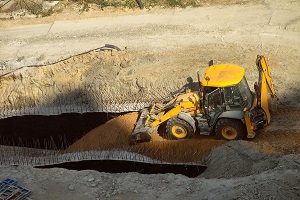
Contractors: Are You One Environmental Exposure Away from Bankruptcy? It’s a lesson too many contractors learn the hard way… One pollution liability claim can ruin you.Environmental exposures continue to be a growing challenge for the construction industry.It’s such a complex and wide-ranging risk.
Jobsites often contain hidden contaminants such as contaminated dirt, buried waste, underground storage tanks, utility lines, asbestos, or lead.Many contractors use and dispose of various solvents, fuels, and other chemicals.And you can get drawn into a claim due to the actions of any one of your subcontractors.
In short, there are almost countless ways you can get caught up in a costly pollution liability claim.And today, your chances of being found liable for environmental damages are better than ever as the risk continues to grow and evolve.Some of the key drivers of this increasing risk include: In September, Hyundai agreed to a $47 million civil settlement with the EPA and the Justice Department for violating Title II of the Clean Air Act when they allegedly sold heavy construction vehicles with diesel engines that weren’t certified to applicable emission standards.
And that’s just one of out of many EPA cases in recent months.Nearly every business has some environmental risk, whether directly or vicariously through other parties such as subcontractors.Consider the residential contractor who had to pay property damage and bodily injury claims exceeding $400,000 plus defense costs in excess of $25,000 after being sued by a residential community.
Why? One of the contractor’s subs had improperly tied in piping during sewage pipe installation, causing raw sewage to migrate into the underlying groundwater and contaminate residential wells.Getting caught up in an environmental claim can subject you to project delays, cleanup and remediation costs, fines, expensive legal battles, and serious damage to your reputation.It could even bankrupt you.
The Big “E” Needlessly, many contractors still get tripped up by the big “E” – the big exclusion.That is, the pollution exclusion in a Contractor’s General Liability (CGL) policy.Virtually every CGL policy has it, leaving a large and potentially costly gap in coverage.
And it can be a confusing exclusion to navigate.It’s been a constantly shifting target for 40 years as pollution exposures, CGL policies, and the definition of “pollution” have evolved.Differing interpretations by courts in different jurisdictions have only added to the confusion.
So, the real lesson is… It only takes one environmental exposure to ruin you – if you’re not properly prepared.Contractors Pollution Liability (CPL) fills the gaps and helps protect you from a wide range of pollution risks associated with construction projects.Policies are becoming more affordable too, which helps small to mid-sized contractors that have environmental exposures but have never considered CPL coverage.
With environmental exposures on the rise, Contractor’s Pollution Liability (CPL) coverage should be an essential part of your risk management strategy.Is your financial protection keeping pace with today’s construction pollution risks? BNC Agency understands the construction industry and offers a wide range of coverages to protect your business from today’s evolving pollution risks.Contact us to learn more.
Publisher: Normal for Business








